PICK OF THE MONTH
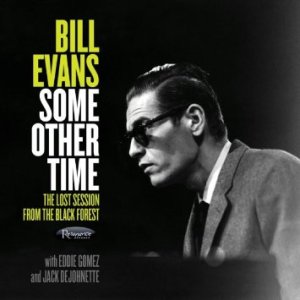 Bill Evans
Bill Evans
Some Other Time: The Lost Session from the Black Forest (2 discs)
Resonance
HCD-2019
Pianist Bill Evans recorded only two albums with bassist Eddie Gomez and drummer Jack DeJohnette. One was a highly-acclaimed live set recorded at the Montreux Jazz Festival in 1968. The other was this one, also recorded in 1968, but in a studio in Villingen, Germany. This second record has never been released in any form until now, and none of these recordings has ever been heard by the public. But I don’t want to overemphasize the historical nature of this release too much, because what really makes it exceptional is the content: Evans is in absolutely peak form here, and his interaction with Gomez and DeJohnette rivals the near-telepathic connection he enjoyed with his classic early-60s trio that included bassist Scott LaFaro and drummer Paul Motion. To add to the pleasure, the recorded sound is exquisite: warm, close, and intimate — slightly dry but not at all claustrophobic, like a really nice pair of soft wool socks that fit perfectly. I really can’t emphasize enough how fine Evans’ playing is on this set — I own a lot of his work, and I would put this album in the very top tier, right alongside the 1961 Village Vanguard material. Strongly recommended to all libraries.
CLASSICAL
 Franz Anton Hoffmeister; Carl Stamitz; Michael Haydn
Franz Anton Hoffmeister; Carl Stamitz; Michael Haydn
Viola Concertos
Andra Darzina; Urban Camerata
CPO (dist. Naxos)
777 986-2
The viola is one of those forgotten instruments, kind of like alto singers in the choir: it never gets to play the melody, and its parts are always kind of hidden in the middle of the chord. But it has a beautiful voice — less resonant and boomy than a cello, less trebly than a violin — so when a composer is kind enough to let it take center stage for a moment, it’s always worth taking note, and these three viola concertos from the classical period are wonderful. That’s partly because the three composers featured are somewhat hidden gems themselves, and partly because Andra Darzina coaxes such beautiful and bittersweet sounds from her instrument. Everyone is playing on modern instruments here. Highly recommended to all classical collections.
 Henryk Górecki; Nikolai Korndorf
Henryk Górecki; Nikolai Korndorf
Whispers of Titans
Goeyvaerts String Trio
Challenge (dist. Allegro)
CC72713
This album features two works by acclaimed figures of 20th-century modernism: Polish composer Henryk Górecki and Russian composer Nikolai Korndorf. The pieces could hardly be more different: Gåorecki’s Genesis 1: Elementi per tre archi is strictly serialist in nature, harshly astringent and forbidding in tone. Korndorf’s In Honour of Alfred Schnittke is tonal and harmonically minimalist (indeed, its opening movement consists entirely of notes within a single unchanging chord), though not without its own difficulties, particularly when the harmonic comity of the earlier movements collapses into dissonant and sorrowful pieces during the final section. All of this knotty and challenging music is delivered with convincing power by the always-excellent Goeyvaerts String Trio.
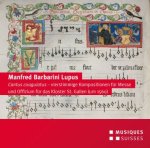 Manfred Barbarini Lupus
Manfred Barbarini Lupus
Cantus coagulatus
Ensemble Ordo Virtutem
Musiques Suisses (dist. Naxos)
MGB CD 6286
Listening to this disc of distinctly late-Medieval-sounding music, one is apt to suspect that the life date provided for its composer (ca. 1560) is a misprint — surely these settings of the Mass and the Divine Office can’t be products of the same period in which composers like Palestrina and Tallis were working? But in fact, Manfred Barbarini Lupus was composing in a deliberately backward-looking style that reflected the religious politics of the time as much as an aesthetic gesture. Apart from the significant pleasures of the music itself, this aspect of its cultural context makes this disc a smart acquisition for comprehensive classical collections.
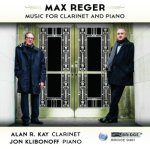 Max Reger
Max Reger
Music for Clarinet and Piano
Alan R. Kay; Jon Klibonoff
Bridge (dist. Albany)
9461
Rick’s Pick
To my ears, anyway, the achingly beautiful and bittersweet chamber music of Max Reger is absolutely perfect for the clarinet, so this gorgeous program of three sonatas and two miniatures is just what Herr Doktor ordered. Clarinetist Alan R. Kay plays with all of the wise and sensitive phrasing and all the limpid beauty of tone one would hope for, and pianist Jon Klibinoff is every bit as good. The recording acoustic is dry but not claustrophobic, and basically every aspect of this album unites to create an exceptionally lovely listening experience. Strongly recommended to all libraries.
 Joseph Bertolozzi
Joseph Bertolozzi
Tower Music: Bertolozzi Plays the Eiffel Tower
Innova (dist. Naxos)
933
Rick’s Pick
Some time back, composer Joseph Bertolozzi wrote a piece of music made up entirely of sounds created by striking parts of New York’s Mid-Hudson Bridge. His second work in that vein involves the Eiffel Tower. After negotiating the labyrinthine politics involved in creating any piece of art featuring the Eiffel Tower, he was given ultimately given free rein to climb all over the monumental structure, hitting it with various mallets, sticks, hammers, and even a large log suspended from straps. He recorded the resulting sounds — 10,000 of them — and then whittled them down to the 2,800 that are used as a sort of virtual keyboard to create the nine-movement work presented on this disc. None of the recorded sounds was electronically altered or manipulated in any way; however, they are layered and ordered in such a way as to create music that sometimes evokes gamelan, sometimes minimalist electronica, sometimes Japanese noh drama, sometimes military drumming. Melodies are few and far between (understandably enough), but the timbral and rhythmic variety is more than sufficient to hold your attention. Any library supporting a program in music composition should absolutely acquire this album.
 Wolfgang Amadeus Mozart
Wolfgang Amadeus Mozart
Kurfürstin-Sonaten, KV 301-306
David Grimal; Mathieu Dupouy
Label-Hérisson (dist. Allegro)
LH13
This recording of six sonatas for violin and piano is partly about the music (which, having been composed by Mozart, is immediately and brilliantly attractive) and partly about the instruments themselves: David Grimal is playing a 1710 Stradivarius violin, and Mathieu Dupouy is playing another wonderful museum piece, a Gräbner pianoforte built in 1791 and currently housed in the Musée de la musique in Paris. This piano’s sound is noticeably different from that of a modern piano, it having been built in a German style that predates the use of Viennese hammer action. While both musicians are excellent, what’s perhaps most rewarding about this album is to listen carefully to the sound of the piano and to Dupouy’s genius at exploiting its unique tonal characteristics.
 Luigi Boccherini
Luigi Boccherini
String Quartets, op. 26
Ensemble Symposium
Brilliant Classics (dist. Naxos)
95302
Although the recorded sound is a little bit thin for my tastes, this is a thoroughly charming account by Ensemble Symposium (on period instruments) of some lesser-known chamber works by Luigi Boccherini — and the first recording to bring all six of these string quartets together on a single program. Boccherini may be most famous for his string quintets and his cello concertos, but his string quartets (of which these are only six of nearly a hundred he produced) are tons of fun as well, and the playing on this album is very good.
 Claude Debussy
Claude Debussy
Chamber Music
Kuijken Ensemble
Arcana (dist. Naxos)
A 392
Rick’s Pick
From music of the late 18th century played on modern instruments, we shift to music of the early 20th century played on period instruments. If you never thought you’d see the names “Kuijken” and “Debussy” on the same CD package, well, here you go. And honestly, it’s pretty awesome. The “period” instruments that the group is using are mostly pretty indistinguishable from modern classical instruments, except perhaps for the piano, which is a turn-of-the-century straight-strung Erard. The program includes a great assortment of Debussy’s chamber works: his first string quartet; sonatas for violin and piano, cello and piano, and flute, viola, and harp; and the famous Syrinx for solo flute. Unsurprisingly, the playing is exceptional throughout.
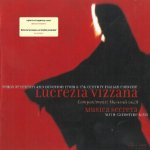 Lucrezia Vizzana
Lucrezia Vizzana
Componimenti Musicali
Musica Secreta
Linn (dist. Naxos)
CKD 071
This collection of motets constitutes the only known example of a 17th-century nun publishing her own music, which makes the disc interesting for historical reasons alone. But the music itself makes it worth purchasing for any library with an interest in Renaissance music. Imagine if Hildegard von Bingen and Claudio Monteverdi had collaborated; what you’d get might sound like this: solo and duo female voices with austere accompaniment delivering intensely devotional songs that would sound nicely at home if incorporated into Monteverdi’s Vespers. Musica Secreta perform these pieces beautifully.
JAZZ
 New Zion
New Zion
Sunshine Seas
Rare Noise
RNR065
Rick’s Pick
We open this month’s Jazz section with an album that fits that category, but just barely. Pianist/guitarist Jamie Saft’s New Zion trio (which features Brazilian percussionist Cyro Baptista on this album) has always pushed genre boundaries of various kinds, and here they blend jazz, samba, reggae, dub, and batucada drumming to very fine effect. The album title is apt: this is strange and sometimes sonically challening music that never fails to have a smile on its face and would at no point sound out of place booming out of a portable stereo on the beach. Very, very nice.
 Jutta Hipp
Jutta Hipp
The German Recordings 1952-1955
Jazzhaus (dist. Naxos)
JAH-423
The Jazzhaus label’s Lost Tapes series continues with this recently-unearthed batch of live and studio recordings made by the young pianist Jutta Hipp in Germany between 1952 and 1955. She was immensely talented, but by 1958 she had left the jazz world behind and moved to Brooklyn, where she worked as a seamstress and artist and then, in retirement, as a dollmaker. She never recorded again. This collection opens with a rather desultory blues number but then becomes much more interesting as it moves through a rambling series of standards that find Hipp in a variety of small-combo settings, most notably featuring tenor saxophonist Hans Koller; when he and Hip are playing together it sounds a bit like siblings saying the same things in different languages. Probably not an essential purchase for every library, but jazz collections should give this one serious consideration.
 Will Bernard
Will Bernard
Out & About
Positone
PR8148
Rick’s Pick
I’ve been keeping an eye on guitarist Will Bernard since his days with the outlandishly wonderful T.J. Kirk (a jazz quartet whose entire repertoire consisted of tunes by Thelonious Monk, James Brown, and Rahsaan Roland Kirk). His latest album finds him leading a quintet on an all-original program of deceptively straight-ahead-sounding modernism: while you’re snapping your fingers to the uptempo swing of “Redwood (Business Casual)” try following the chord changes; while luxuriating in the gentle warmth of the midtempo “Homebody,” try figuring out what time signature(s) it’s in. The whole album’s like that, and it’s great.
 Groove Legacy
Groove Legacy
Groove Legacy
Self-released
GLCD 0001
Personally, I tend to prefer funkiness to funk — I like the funk, that is, as a property more than as the thing itself. But this septet of Los Angeles studio pros has convinced me that Crusaders-style instrumental jazz-funk is probably worth more of my listening time than I’ve accorded it in the past. When real professionals get together to have fun, the results tend to be very, very listenable, partly because the way you get to be a pro is by making people want to listen. The guest turns by Robbern Ford and Larry Carlton don’t hurt, either.
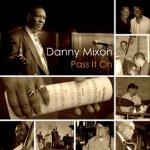 Danny Mixon
Danny Mixon
Pass It On
Self-released
No cat. no.
There’s something about Danny Mixon’s playing, something particularly joyful and rhythmically variegated, that led me to look up his bio to see whether he grew up in New Orleans. He didn’t (he’s from Brooklyn), but this album still makes me think of Canal Street and Jackson Square. Anyway, this is not jazz for someone on the hunt for new ideas: it’s a celebration of tradition, or of a variety of traditions: stride and bop and boogie-woogie and even jazz-pop. It maybe tells you something about this album that it opens with a take on “Blue Monk” and then wends its way, eight tracks later, to a mellow invocation of Joe Sample. Along the way you’ll hear tunes by Wayne Shorter, Freddie Hubbard, and Duke Ellington as well. It’s kind of a strange mix, but a very enjoyable one.
FOLK/COUNTRY
 Teddy Thompson & Kelly Jones
Teddy Thompson & Kelly Jones
Little Windows
Cooking Vinyl
630
Rick’s Pick
If you miss the Everly Brothers and Buddy Holly, and if you’ve been in-the-know enough to be following the parallel careers of Teddy Thompson and Kelly Jones, then there’s a good chance you’re already dancing around in anticipation of hearing this album that they’ve made together. Almost every line is sung in harmony; the tunes hark back to the 1950s and 1960s in every good way possible, and sometimes the lyrics are hilarious. The album only lasts 26 minutes, which would normally preclude it from getting a Rick’s Pick, but since every second of those 26 minutes is pure bliss I can’t bring myself to penalize them.
 Kelley McRae
Kelley McRae
The Wayside
Self-released
No cat. no.
Kelley McRae is a very fine singer-songwriter who collaborates with her husband Matt Castellin to create quiet, reflective pearls of neo-folk loveliness on this, her fifth album. In terms of volume, none of these songs rises above a gentle murmur; as for tempo, well, there’s not much — all of the songs sound like they were performed by people sitting on a couch or in a rocking chair on the front porch. Which is not to say that they’re laid-back, exactly: listen to the words and you’ll hear a lot of worry and longing. But it’s expressed so gently and softly that you might easily mistake it for peace unless you listen closely.
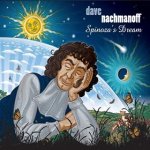 Dave Nachmanoff
Dave Nachmanoff
Spinoza’s Dream
Troubadour
TR012
Singer-songwriter albums with philosophical themes set alarm bells off in my head, so I confess I approached this one with a bit of trepidation. But Nachmanoff approaches those themes with humor and subtlety, generally opting for communication rather than for showing off how smart he is. He also has an impressive stylistic range, jumping from quietly sprightly folk-pop to Tin Pan Alley jazziness to bluesy rock and back again in the space of the first four tracks. And here’s a fun pop history nugget: the session players on this album are the same guys who played on Al Stewart’s 1976 hit “Year of the Cat.”
 Kaia Kater
Kaia Kater
Sorrow Bound
Kingswood
KWR1502
Rick’s Pick
This is a deeply haunting album by a young woman who plays clawhammer banjo and sings both original and traditional songs about death, loss, sewing, and love — themes older than folk music itself and probably as old as human language. Kater herself is barely out of her teens, which somehow makes her delivery of these old songs and ancient themes even more cool and unsettling. Her rendition of “En Filant Ma Quenouille” is possibly more affecting than that of the McGarrigle sisters; her take on “West Virginia Boys” is both beautiful and unutterably bleak. Recommended to all folk collections.
ROCK/POP
 Parra for Cuva & Senoy
Parra for Cuva & Senoy
Darwīš
Project: Mooncircle
PMC152
Rick’s Pick
Project: Mooncircle is one of very few labels whose output I always want to hear. Not everything ends up rubbing me the right way, of course, but such a strong preponderance of its releases are both ravishingly beautiful and rhythmically compelling that I now find myself drawn to the brand as if by a talisman. If you want to know why, check out the latest from Parra for Cuva & Senoy, a full-length album inspired by the concept of ascetic Muslim monks called darwīš. You won’t hear any muezzin chants or even very much in the way of obvious Middle Eastern elements at all — just richly atmospheric, sonically detailed, gently propulsive slices of sun-drenched electronica that will leave you feeling uplifted and refreshed. Highly recommended to all collections.
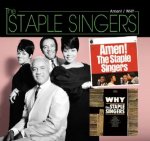 The Staple Singers
The Staple Singers
Amen!/WHY (reissue)
Epic/Real Gone Music
RGM-0448
This disc brings together two classic albums by famed gospel ensemble the Staple Singers: Amen! (originally released in 1964) and WHY (from 1966). Led by Roebuck “Pops” Staples, the quartet also featured his son Pervis and his daughters Mavis and Cleotha, and they were one of America’s most famous and beloved gospel groups for over 45 years; Mavis Staples continues to perform and record. Listening to these two albums from the 1960s, one is immediately struck by the predominance of minor keys and dark moods — even the uptempo numbers seem more about serious devotion and dealing with hard truths than about emotional uplift. But the songs are all beautifully arranged and powerfully sung, and most library collections would benefit from picking up this handy twofer.
 Emmy the Great
Emmy the Great
Second Love
Bella Union
530CD
Rick’s Pick
When a song is called “Hyperlink” and its chorus goes “Love love love/Love is the answer,” you know you’d better check the lyrics more carefully before deciding what the song is really saying. And sure enough, the next line in that chorus is “Oh but I am a comfortable liar.” And there it is, a microcosm of this whole album: soft and simple dream-pop songs that hide occasional barbs that keep everything more interesting than you might suspect it to be at first listen. The thing is, the dream pop is so narcotically attractive that you might not even notice the barbs until you’ve swallowed them. Very highly recommended.
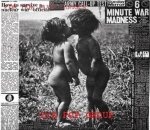 The Pop Group
The Pop Group
For How Much Longer Do We Tolerate Mass Murder? (reissue)
Freak (dist. Redeye)
FREAK19CD
1980 was a high-water mark for extremely politically engaged punk rock, and quite a few bands (especially British ones) were putting out albums of abrasive and jaggedly funky songs in packages that included crudely photocopied lyric sheets adorned with gruesome black-and-white photos of atrocities. Compared to, say, Crass, the Pop Group were positively mellifluous; compared to Gang of Four, they were more politically in-your-face (which I realize may be hard to believe). Bandleader Mark Stewart would go on to form New Age Steppers and, later, Maffia with a couple of former members of Pop Group and bring his aggro-political stylings to a more dubwise context; he continues to inveigh against the system as a solo artist. This is the first time this genuinely important (but, it must be said, ultimately kind of tiresome) album has been reissued in any format.
 Information Society
Information Society
Orders of Magnitude
Hakatak
HAK7032
Well, isn’t this fun: a covers album from one of the foremost electropop bands of the 1980s. What makes it extra fun isn’t just the band’s expert arrangements and production, but even more so it’s the repertoire they’ve chosen to cover: everything from fairly obvious choices like Human League’s “Don’t You Want Me” and Heaven 17’s “(We Don’t Need This) Fascist Groove Thang” to much — much — less obvious selections including the “Heffalumps and Woozles” song from Disney’s Winnie the Pooh adaptation and “Capital I,” a favorite from the children’s TV show Sesame Street. There’s stuff from Fad Gadget and Snakefinger, too. If your patron base includes a significant number of people over age 45 who still have creative haircuts, this album is for you.
WORLD/ETHNIC
 Eva Salina
Eva Salina
Sings Saban Bajramovic
Vogiton
No cat. no.
Saban Bajramovic is a legend of Balkan Romani (Gypsy) music, the composer of hundreds of songs that remain hugely popular throughout the Balkan diaspora and particularly in New York. That’s where singer Eva Salina hails from, and for this tribute album she has gathered Balkan and Balkan-sympathetic musicians from the ranks of bands like Slavic Soul Party!, Kultur Shock, and the Klezmatics to produce a full program of Bajramovic’s music. As one might expect, the result is by turns raucous, acerbic, and suffused with gentle longing. Massed horns and wickedly crooked rhythms abound, and Salina’s voice is a thrill.
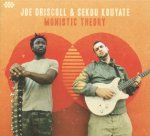 Joe Driscoll & Sekou Kouyate
Joe Driscoll & Sekou Kouyate
Monistic Theory
Cumbancha
CMB-CD-37
Rick’s Pick
This is the second outing for guitarist/singer Joe Driscoll and kora player/singer Sekou Kouyate. Both are virtuosos on their instruments (Kouyate plays a significantly modified electric kora) and when they work together their sound really can’t be called a “fusion” — it’s much more of an emulsion, one in which Driscoll’s folk/funk/hip-hop background rubs up against Kouyate’s griot-informed West African stylings to create a wildly colorful mixture of sounds and textures. It’s incredibly exciting and should find a home in every library.
 Akae Beka / I Grade
Akae Beka / I Grade
Portals
I Grade
37
Vaughn Benjamin and his brother Ron, both from St. Croix, began recording under the name Midnite in the late 1980s. In 2015 Ron left the band and Vaughn now performs under the name Akae Beka, a name drawn from the apocryphal Book of Enoch. Some things don’t change, though: the thick, dark, slow roots reggae rhythms and the chanting vocals remain in full effect, as do the intensely spiritual lyrical concerns. Benjamin’s voice can be a little bit difficult to get used to — at time it sounds as if he’s singing with strep throat. But it’s worth the effort to let yourself get drawn into these songs.
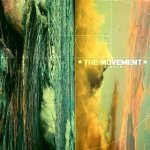 The Movement
The Movement
Golden
Rootfire Cooperative
RFC001
Rick’s Pick
For a very different take on modern roots reggae, consider the latest studio album from a Columbia, SC-based group called The Movement. Guest artists on this one include the brilliant vocalist Elliot Martin (of John Brown’s Body) and Bermudian dancehall artist Collie Buddz, and the vibe is paradoxically both cheerful and introspective throughout. The band incorporates a wealth of found-sound samples recorded in the forest outside of their studio, but the production is so rich and densely textured that they blend into the mix organically rather than sounding like a superficial add-on. And the hooks are everywhere. Highly recommended to all libraries.
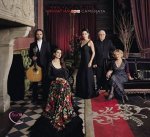 Manhattan Camerata
Manhattan Camerata
Tango Fado Project
Sorel Classics (dist. Naxos)
SC CD 005
I’m not sure why anyone thought that blending tango and fado would be a great idea — apart from smoldering emotionalism, the two genres have little to do with each other: one is from Portugal and the other from Argentina; one is about dancing and the other is about sitting in a smoky club and listening; one is based in song form and the other in instrumental arrangements; etc. But this New York-based chamber ensemble makes it work somehow, and while the recorded sound is a bit tight and compressed for my tastes, the album is a real kick overall. Recommended to all world music collections.